Japanese Satellite Destroyed by Unknown Causes : A Well Thought Out Scream by James Riordan
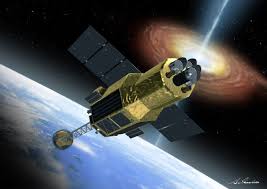
The two greatest mysteries left for science to unravel could be summed up by two questions. What’s out there? What’s in there? The first question refers to the infinitely large while the second questions refers to the infinitely small. On both of these issues, every time we think we know it all, some happens to remind us that we don’t. As far as what’s in there – what is  the infinitely small, at one time we thought the Atom was the smallest particle and that it was the bottom line — the smallest building block from which everything else was built. It was thought indivisible, until it was split to reveal protons, neutrons and electrons inside. These too, seemed like fundamental particles, before scientists discovered that protons and neutrons are made of three quarks each.
the infinitely small, at one time we thought the Atom was the smallest particle and that it was the bottom line — the smallest building block from which everything else was built. It was thought indivisible, until it was split to reveal protons, neutrons and electrons inside. These too, seemed like fundamental particles, before scientists discovered that protons and neutrons are made of three quarks each.
“This time we haven’t been able to see any evidence at all that there’s anything inside quarks,” said physicist Andy Parker. “Have we reached the most fundamental layer of matter?”
And even if quarks and electrons are indivisible, Parker said, scientists don’t know if they are the smallest bits of matter in existence, or if the universe contains objects that are even more minute.
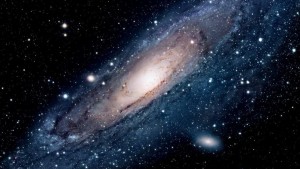 As far as what’s out there and the infinitely large, that’s another question that keeps getting new answers. When thinking about big things, very big things, the parable of the blind men and the elephant is instructive: each of the men feels for a part of the elephant. “It’s a wall”; “It’s a rope”; “a tree”: in debating what it is, they almost come to blows. Leonard Susskind, who developed string theory, says this isn’t unlike the battle that plays out in our mind, between what we can perceive and what we can know. “The universe, even more than the elephant, is too big for any one perspective, and most of us are busy squabbling about some small part.” Back in 2013, NASA announced that it had discovered the biggest spiral galaxy known to man. From “tip to tip,” the NGC 6872 spans 522,000 light years—five times the length of our own Milky Way, which is already considered a pretty massive spiral galaxy.
As far as what’s out there and the infinitely large, that’s another question that keeps getting new answers. When thinking about big things, very big things, the parable of the blind men and the elephant is instructive: each of the men feels for a part of the elephant. “It’s a wall”; “It’s a rope”; “a tree”: in debating what it is, they almost come to blows. Leonard Susskind, who developed string theory, says this isn’t unlike the battle that plays out in our mind, between what we can perceive and what we can know. “The universe, even more than the elephant, is too big for any one perspective, and most of us are busy squabbling about some small part.” Back in 2013, NASA announced that it had discovered the biggest spiral galaxy known to man. From “tip to tip,” the NGC 6872 spans 522,000 light years—five times the length of our own Milky Way, which is already considered a pretty massive spiral galaxy.
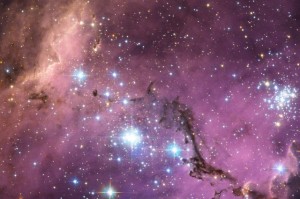 Then last year, scientists discoivered something bigger. The currently designated largest structure in the universe is impressively titled: Hercules-Corona Borealis Great Wall, or Great Gamma-Ray Burst Wall (GRB Wall). A gamma-ray burst is an ultra-energetic explosion of gamma-radiation – the brightest electromagnetic event in the universe. The source of gamma-ray bursts are thought to be associated with the death throes of dying stars within distant galaxies. For scientists, GRBs are beacons that indicate the region is surrounded by a dense area of dust and matter.
Then last year, scientists discoivered something bigger. The currently designated largest structure in the universe is impressively titled: Hercules-Corona Borealis Great Wall, or Great Gamma-Ray Burst Wall (GRB Wall). A gamma-ray burst is an ultra-energetic explosion of gamma-radiation – the brightest electromagnetic event in the universe. The source of gamma-ray bursts are thought to be associated with the death throes of dying stars within distant galaxies. For scientists, GRBs are beacons that indicate the region is surrounded by a dense area of dust and matter.
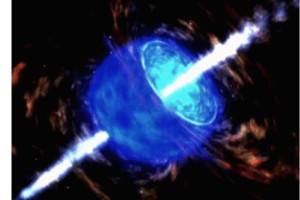 Since the wall is so far away, this makes it rather faint and difficult to map accurately. However, preliminary estimates for its size range from 5.4 billion light-years across (which is unimaginably enormous) all the way to 18 billion light-years across (which is mind-blowingly, monumentally enormous). Yep, that’s big. Bigger than you could ever hope to realistically comprehend.
Since the wall is so far away, this makes it rather faint and difficult to map accurately. However, preliminary estimates for its size range from 5.4 billion light-years across (which is unimaginably enormous) all the way to 18 billion light-years across (which is mind-blowingly, monumentally enormous). Yep, that’s big. Bigger than you could ever hope to realistically comprehend.
All of which leads us back to the question or what’s out there? Recently, a new question surfaced in this regard. What destroyed the Hitomi space probe? The black hole-hunting Japanese satellite disappeared on April 2nd and then mysteriously surfaced again and made contact with ground control. The Japanese space agency JAXA lost contact with the Hitomi space probe on Saturday April 2nd, right before the satellite was due to start operations. A few days later the satellite managed to send two short communications to mission control. The satellite was then found to have smashed apart into five separate pieces, one piece of which sent the last signal before dying completely out. “JAXA has not been able to figure out the state of its health, as the time frames for receiving the signals were very short,” said JAXA in a statement.
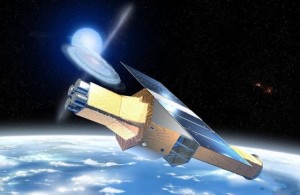 The US Joint Space Operations Center, which spotted the broken apart satellite has said there’s no evidence that the probe was hit by space debris. This suggests that the Hitomi’s fate is more likely to be the result of a technical malfunction on the probe itself although no one has been able to figure out what could do such colossal damage. JAXA has not yet be able to find out if they satellite can be salvaged.
The US Joint Space Operations Center, which spotted the broken apart satellite has said there’s no evidence that the probe was hit by space debris. This suggests that the Hitomi’s fate is more likely to be the result of a technical malfunction on the probe itself although no one has been able to figure out what could do such colossal damage. JAXA has not yet be able to find out if they satellite can be salvaged.
A video made by astronomer Paul Maley in Arizona appears to show the satellite spinning out of control, which could explain why it has lost contact with ground control. The ambitious Hitomi satellite featured instruments provided by NASA, ESA and the Canadian Space Agency with the entire project reported to have cost $270million (£188million). The probe was launched to gather vital information on supermassive black holes.
One can’t help but wonder if there are some questions meant to be unanswered.
___


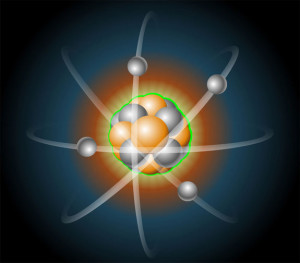

No Comment